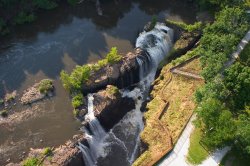The Main Points
- A diverse macroinvertebrate community is a good indication of overall ecosystem health.
- Studying macroinvertebrate community is a useful way to engage and empower citizen scientists.
The Details
Benthic macroinvertebrates live in rivers and streams. Generally speaking, a diverse macroinvertebrate community indicates a healthy aquatic ecosystem. Given an ecosystem of a certain size and with a certain amount of resources, both habitat and resources will be shared among a diverse group of species. This is because each species is adapted to a certain range of resource requirements and habitat conditions.
Different macroinvertebrate species have varying degrees of pollution tolerance. As the ecosystem becomes compromised, the environmental conditions may change that give one or more species competitive advantages. These species become dominant and outcompete the others. In most cases, pollution tolerant species will thrive. In a badly polluted stream, pollution tolerant species may be the only species that can survive.
Chemical testing only reflects water quality at that specific moment. By studying macroinvertebrate community and measuring their diversity, abundances and composition of functional feeding group, a long-term picture of water quality can be developed.
Macroinvertebrate studies are also well suited to citizen science efforts and the Passaic River Institute is able to provide training for volunteers. A macroinvertebrate study can be an effective community engagement tool and empower volunteers to take a more active role in habitat conservation.
